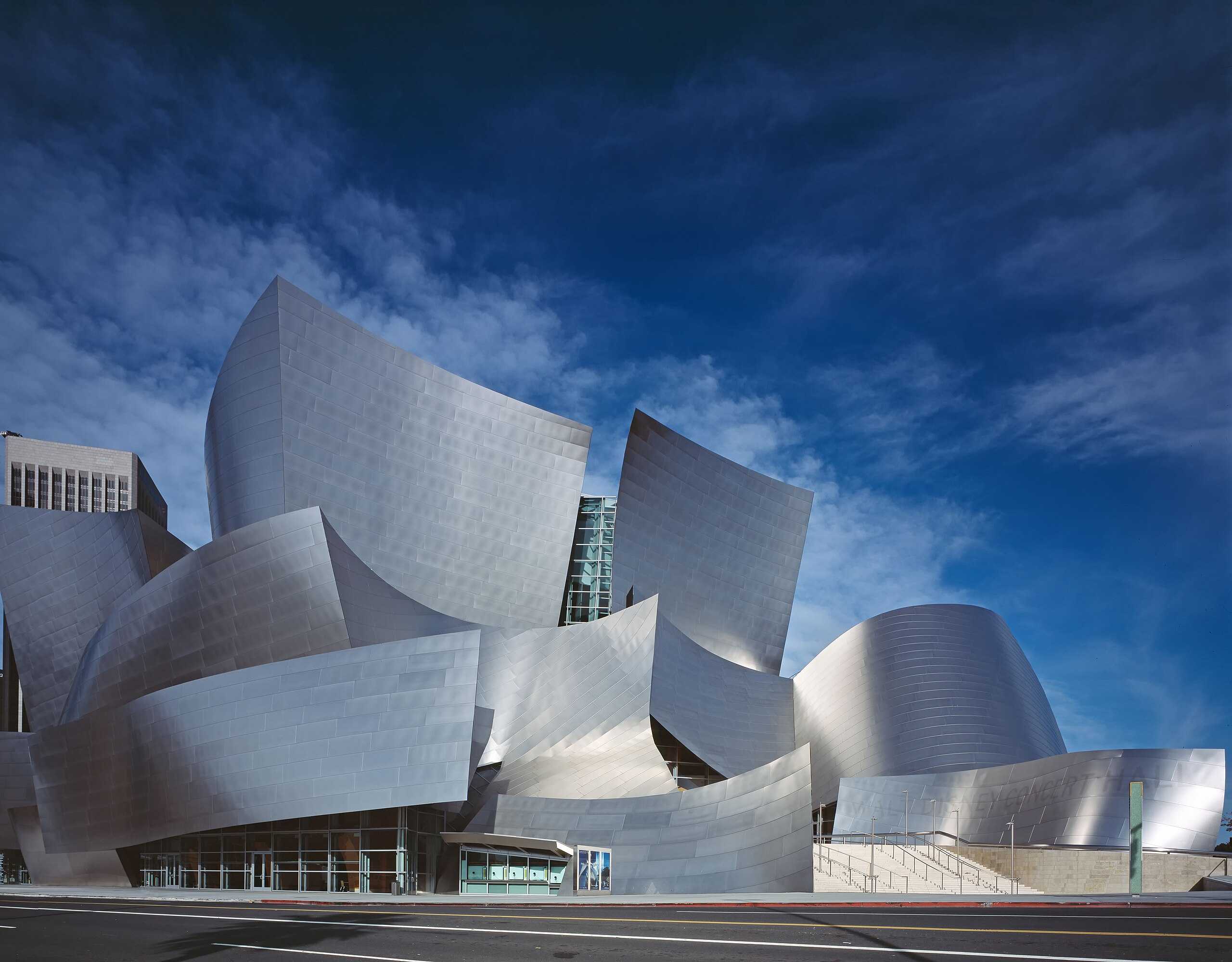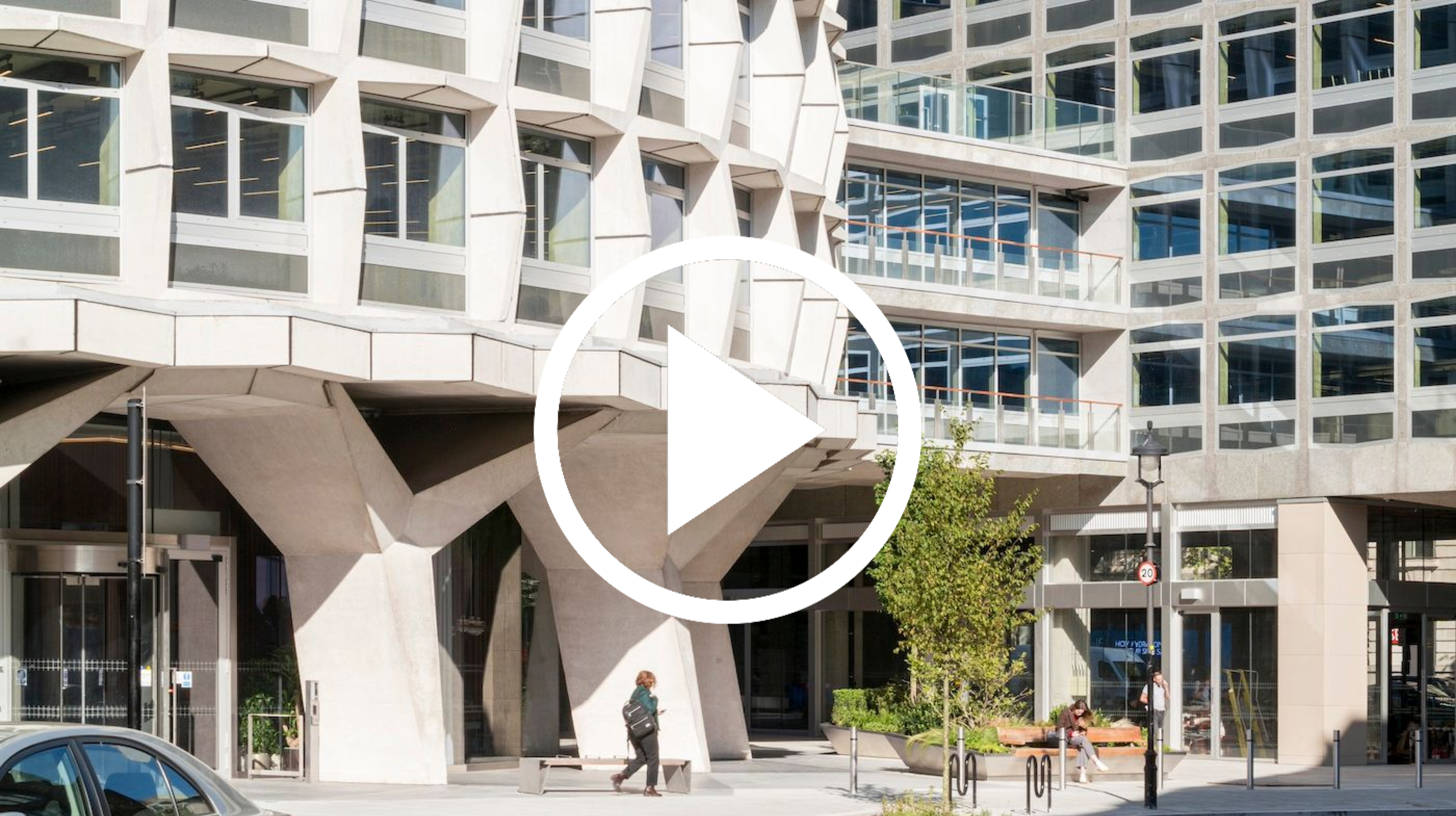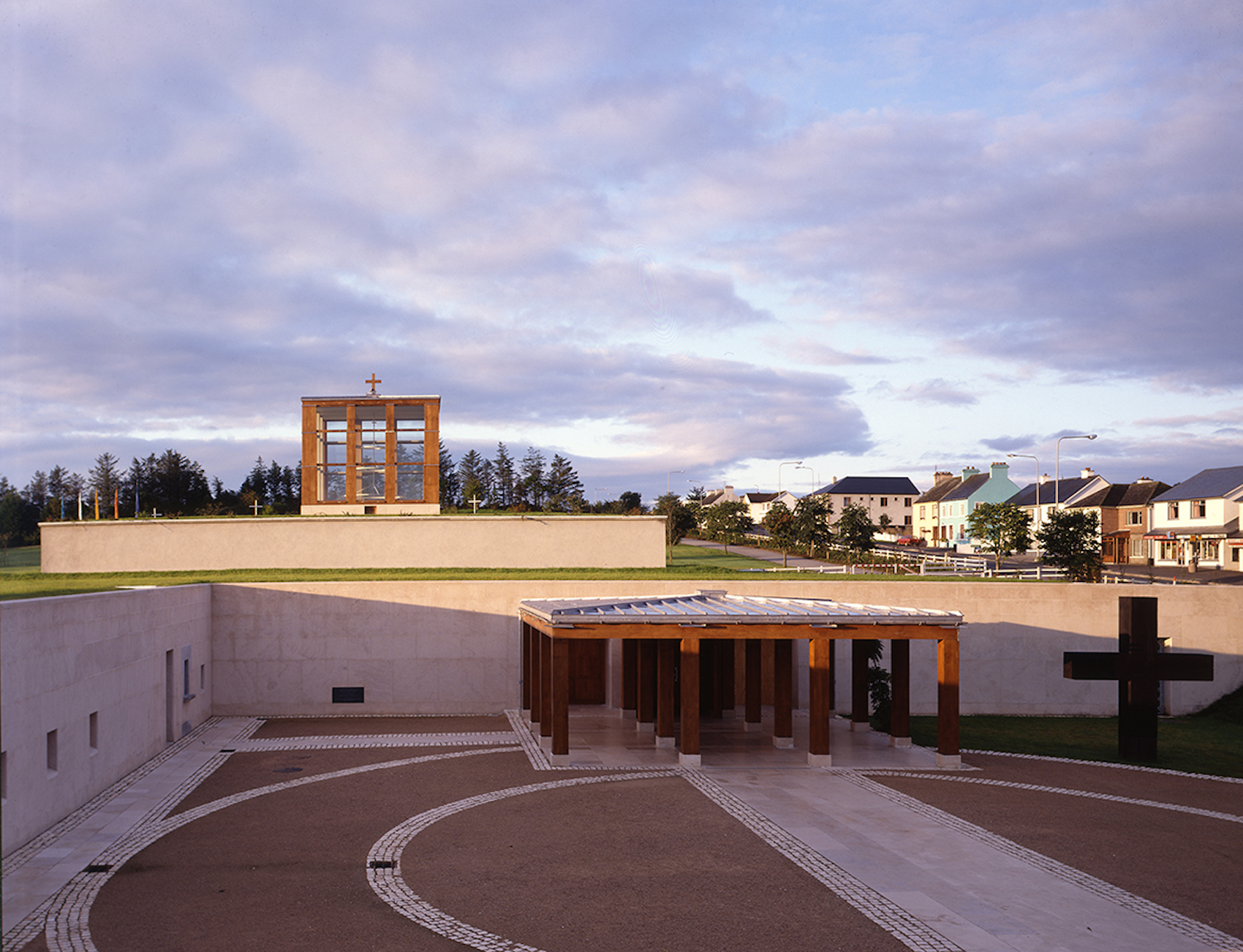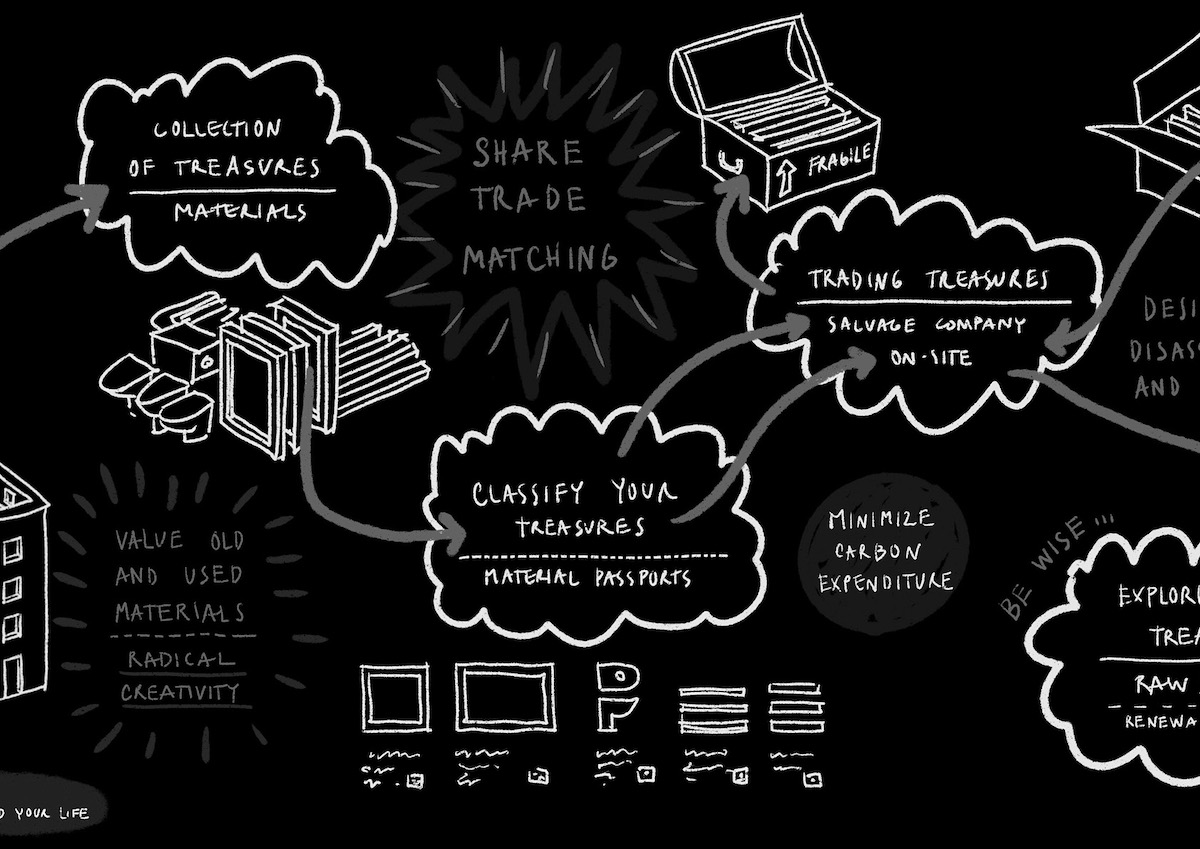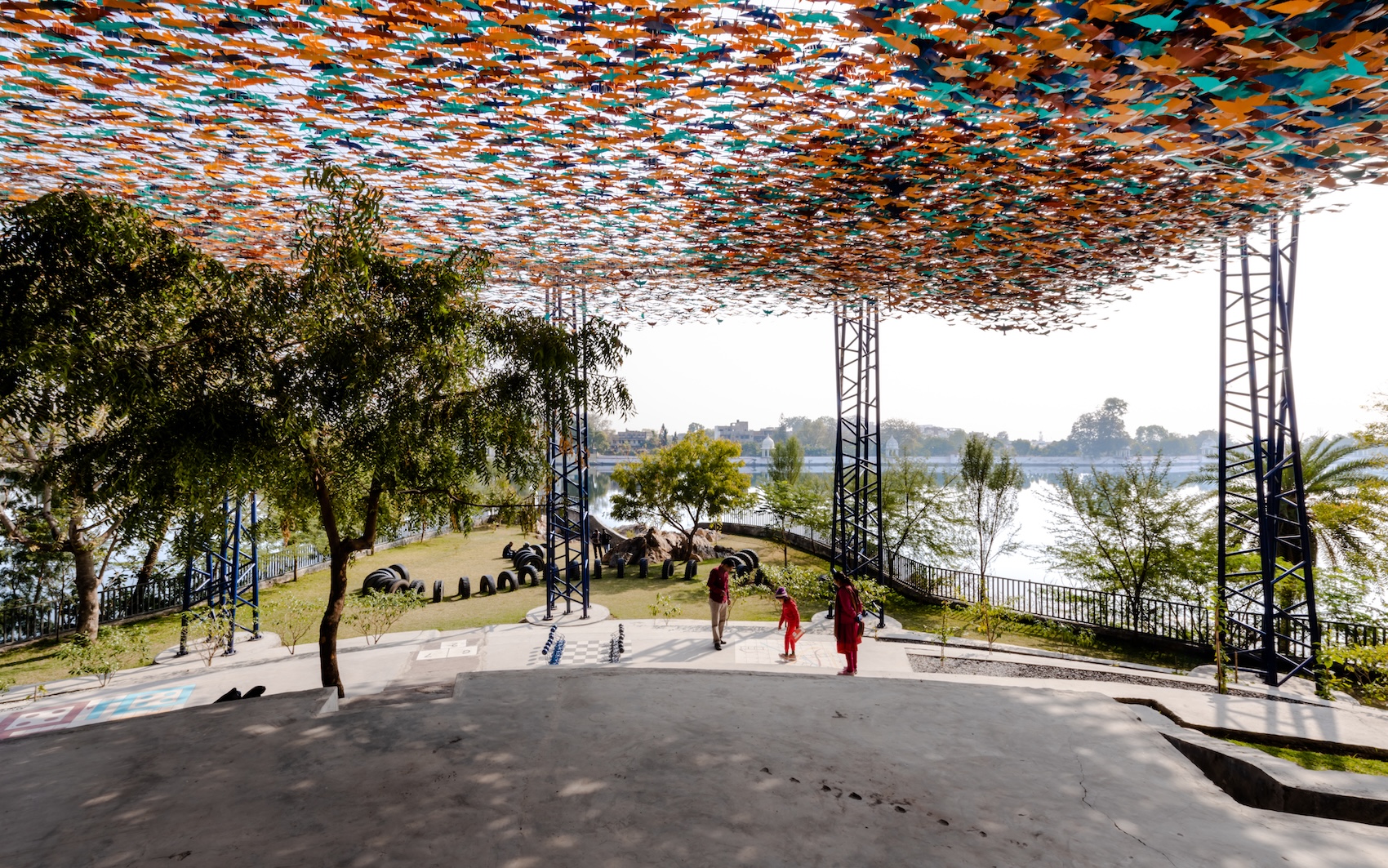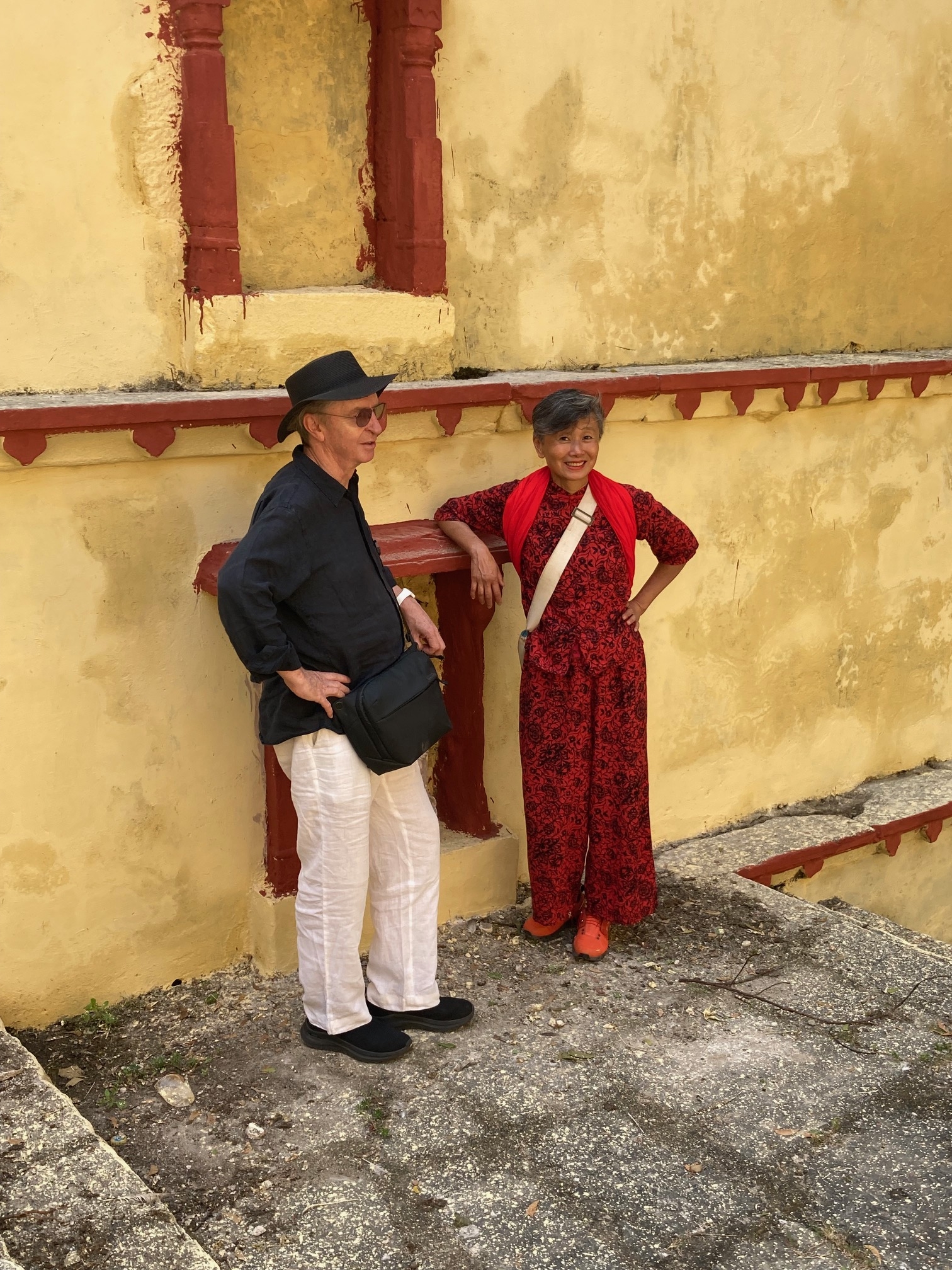
Times Square cctv cameras (2005), by Surveillance Camera Players, from Actions: What Can You Do With the City (http://cca-actions.com)
Where can you find a shepherd herding his flock as it tends to the upkeep of an urban park? (Turin). Or see youngsters playing ball among the benches and lamp posts in a public-square-come-soccer-field created by just a few strokes of paint? (Sharjah). In what city can you pick fruit from the trees at night – and what about fresh vegetables and flowers from plots laid out amid the traffic? (Los Angeles and London). Or stroll down the middle of a highway closed to automobile traffic every Sunday? (São Paulo).
When we think of a city, we are inclined to think of its buildings, streets and squares. We think of its towers and skyscrapers, its rivers and hills, its ‘spectacular’ panoramas. But a city is much more than the stones, concrete and glass of its buildings, the asphalt of its streets or the wood and corrugated metal of the shantytowns that metastasize around it.
Cities are built by those who live and work in them, and by those who pass through. Their physical configuration is the result of thousands of actions that converge toward common goals – or collide against each other – at every moment. The combination of these forces produces effects of greater or lesser permanence on the physical environment, effects that eventually coalesce into buildings and streets, squares and parks, monuments, markets and makeshift housing.
So, what is My Kind of Town? It is foremost a place where interesting things happen, where we can pursue our interests and form new ones, and especially, where we can take part in actions that transform the physical city and its lifestyles.
Faced with environmental crisis and the intensification of social conflict and inequality, many are beginning to question our role as passive consumers. The sense of urgency dictated by new circumstances has offered fertile ground for alternative paths.
While exploring these paths, it behoves us to gather information and draw maps to guide our actions. Some have already done so, designing maps that show us how to move through the city without ever falling under the increasingly omniscient gaze of CCTV cameras (New York and internationally). Others show us how to find our way to public beaches that have become almost inaccessible because of the proliferation of private property along the shore (Los Angeles). And a website can now show us how and where to locate things that we need – and that others are trying to get rid of – in real time (Majorca).
But how might we reconquer the urban space that is now chock-a-block with cars? We can go about the city with a portable crosswalk and unroll it as needed to stop traffic (Kassel). Or perhaps, like the Urban Repair Squad, we can supply ourselves with brushes and paint and, instead of waiting years for traffic officials’ decisions, venture into the city streets at night to stencil our own bicycle paths (Toronto).
Why not use abandoned swimming pools for vertical skateboarding (Los Angeles)? And why not amuse ourselves by navigating the city according to the rules and techniques of parkour (Paris)? Why not glide along the rooftops, as the children do on top of the Oscar Niemeyer pavilion in Ibirapuera Park (São Paulo)?
Why not reuse old tyres, transform vacant lots into playgrounds, rent buildings earmarked for demolition for a few months (Durban, Seville, Brussels)? Why not recover the still usable food discarded by supermarkets, or strew the city with harmless ‘dirt bombs’ filled with the seeds of plants, flowers and herbs (internationally, New York)?
Far-reaching transformations can (and do) result from seemingly unremarkable acts if they converge toward common goals and reach a critical mass sufficient to overcome inevitable resistance. For this reason, since 2007 the Canadian Centre for Architecture has been developing a project called Actions: What You Can Do With the City. The research to date has been presented as an exhibition, a book and a website. Born of a compilation of 99 ‘mini actions’ – accessible means of transforming the urban world and alternative ways of using it – the project is ongoing. This list, available to all, has grown to include over 250 mini actions thanks to the contributions of the world’s urban adventurers. The Actions project maintains that alternative or original uses for the city’s materials and circumstances are unlimited. Benches or sheep, a can of paint or masks, tyres or scaffolding, building codes and plastic bags are all, in reality, ordinary tools at our disposal for getting back into action and creating Our Kind of Town – without further delay.
Mirko Zardini is an architect, director of the Canadian Centre for Architecture, former editor of Casabella and Lotus International, and teacher at schools including ETH Zurich, Harvard and EPFL Lausanne.
The Canadian Centre for Architecture
AT212/ October 2010/ p96


